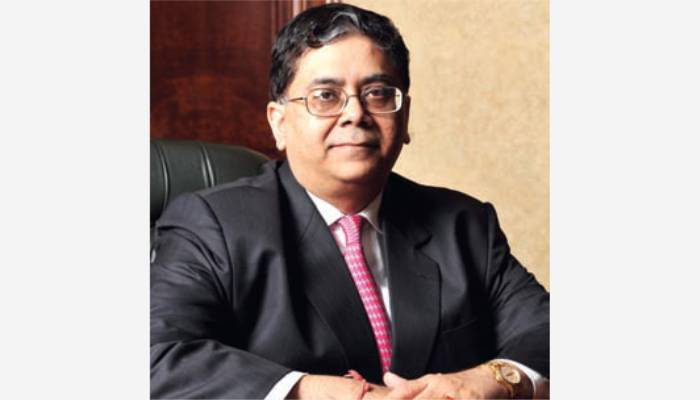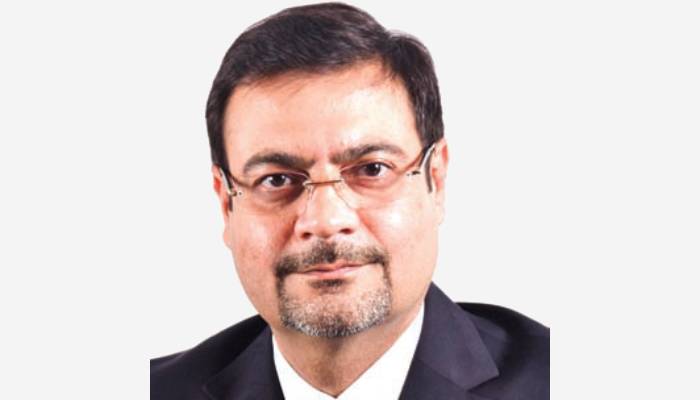
or

The FSLRC’s Approach Paper has started a debate on the kind of regulatory framework India must have to make its financial system not only vibrant but also responsive to its needs. This story explores the debate
With the mandate to review and recast legal institutional structures of financial sector in the country, the Financial Sector Legislative Reforms Commission (the ‘Commission’), in October 2012 came out with its ‘Approach Paper’ (‘the Paper’) for doing so.
While concluding the Paper, the Commission outlines its concern that it aims at establishing ‘sound financial regulatory agencies, which will continually reinterpret principles-based laws in the light of contemporary change, and draft subordinated legislation that serves the needs of the Indian economy. This subordinated legislation, coupled with the jurisprudence built up at the FSAT (Financial Sector Appellate Tribunal) and the Supreme Court, will continually reflect the changing needs of the Indian economy.’
This story is about what has been proposed by the Paper, critical examination of its desirability and feasibility

“In theory, the concept of a super regulator may seem like an attractive solution to improve co-ordination and consistency of regulatory supervision, ensure greater predictability and eliminate regulatory turf wars. However, in India, the responsibilities and expertise of each financial regulator is extremely sector specific and accommodating these myriad interests under one umbrella may not be the best way forward. The super regulator model has also not been very successful in other parts of the world.
What we need is a solution that is customised to Indian conditions yet robust enough to withstand and adapt to global impacts on our financial markets. The universe of hybrid financial products is expanding and we need an effective mechanism in place to not only deal with regulatory arbitrage but also avoid over regulation. Towards this end, the FSLRC should focus on strengthening the existing framework to settle the inter-regulatory disputes without compromising on the autonomy of individual regulators.
The proposals to introduce the Financial Redressal Agency and the Financial Services Appellate Tribunal are a step in the right direction but the FSLRC must also evaluate the feasibility of regulators engaging with each other and entering into MoUs to reduce friction and facilitate clear demarcation of regulatory turfs.”
The Approach paper proposes a Financial Regulatory Architecture Act which sets out the work allocation across different financial agencies. The belief being ‘changes in the work allocation should not require changes to the underlying laws themselves’. It in effect means a shift in regulatory approach towards financial sector. From current Sectoral approach, where each individual financial sector viz. Capital Markets, Insurance, Commoditiesand Pension apart from monetary policy is under a separate regulator it proposes a tasks/functions based approach that financial laws must perform like consumer protection and redressal of grievances, Micro-Prudential management, Single Appellate body across all financial sector etc. The suggested framework is as follows
The reasons outlined, for rewriting the entire financial sector legislative framework, to quote the FSLRC itself, is that ‘there are over 60 Acts and multiple Rules/Regulations in the sector and many of them date back decades when the financial landscape was very different from what is obtaining today’. This anachronism of laws is made worse by piecemeal modifications leading to ‘regulatory gaps, overlaps, inconsistencies and regulatory arbitrage’. And this confused and complicated situation has led to ‘loss of scale and scope that could be available from a seamless financial market with all its attendant benefits of minimising the intermediation cost’
Further reasoning, the Commission maintains that “the extent to which a given amount of investment translates into GDP growth depends on the financial system. A good quality financial system processes information, makes forecasts, and allocates capital to the right projects. A bad financial system misallocates capital, which yields reduced growth”.The paper quotes some examples, from infrastructure, SMEs, Agriculture sector and argues that if given proper institutional support in terms of financial services like hedging services, insurance or financing in local currency these sectors can see a turnaround in their fortunes which are lagging due to either absence or inefficiency of such services, which includes:
Need for making regulators more Accountable and Transparent: Clarity of mandate reduces the possibility of direct conflicts of interests and helps in bringing in better Accountability

Before creating a UFA, there are many important issues which need to be analysed and discussed such as – how will Government of India operationally ensure to provide effective regulatory service at one place through the UFA? There will be several operational challenges to integrate the different regulatory authorities/ services under one umbrella. Further, change in the financial regulatory structure will also lead to a lot of reshuffling amongst the exiting regulatory authorities and will bring extra burden on Government exchequer.
The legislature while defining the mandate and making provisions therefor for a regulator must avoid conflicting charter for it. Because it not only leads to conflict of interest for the regulator but also allows it to ‘explain away failure’.
While reasoning that the regulators may sometimes draft regulations that are convenient for the regulator rather than the larger national interest. The Paper argues that since ‘all regulation imposes costs upon society. The regulator should be obliged to analyse the costs and benefits of a proposed regulation. Therefore the rule making power which is to be granted to a Regulator must be within clearly defined parameters and must be punctuated by a process that compares the costs against the market failures that motivate the regulation. This can be achieved by thorough documentation of the analytical reasoning for the proposed Regulations and publicly circulating it; followed by thorough consultative process whereby substantially all misgivings and suggestions are considered and suitably incorporated. Finally a proper appellate process to appeal against ultra vires regulations would provide a well structured rule making process.
By way of ‘Annual Report’ or any other suitable mechanism whereby the performance of the Regulator qua theobjectives with which it was set up, alongwith a full management information system about the activities of each agency should be placed into the public domain.
The argument advanced in the paper is that “at present, many activities that naturally sit together in one financial firm are forcibly spread across multiple financial firms, in order to suit the contours of the Indian financial regulatory architecture. Financial regulatory architecture should be conducive to greater economies of scale and scope in the financial system”
A paucity of talent and domain expertise in government, and constructing a large number of agencies is relatively difficult from a staffing perspective. It is efficient to place functions that require correlated skills into a single agency.
But many experts in the field do not agree with the reasoning of the Commission as to the desirability of such a revamped financial regulatory arrangement and explains as to why such a change is not needed.
For example C. Rangarajan, former governor RBI and currently Chairman of the Prime Minister’s economic advisory council, whose views have been published in the respected Business newspaper Mint state that: “We still have not reached a stage in which our various financial segments have developed to a full extent.” Relying on the international experience he reasons that “The UK had a single regulator and it ran into problems. The US had multiple regulators and they also ran into problems. The experience that is now available does not point to very clear evidence as to which is better”. “The draft report talks in terms of single regulator for all financial other than banking,’ Rangarajan said. “This again is not very consistent.”
And further Sunil Seth, Senior Partner, Seth Dua& Associates, reasons that although the intent of the Central Government may be noble, there is no guarantee that by having a Unified Financial Agency (“UFA”) in place of SEBI, IRDA, FMC, PFRDA, we would achieve better governance in order to serve the community/public interest at large. If the emphasis in the Approach Paper would have been to identify and implement ways to achieve better co-ordination amongst the various regulatory authorities in India instead of having one UFA, in our view, it would have been a better recommendation since every regulatory organization has, over the years, developed its own unique identity, purpose and expertise in a particular financial sector.

The paper published by the Financial Sector Legislative Reforms Commission (FSLRC) suggests a significant departure from the current financial regulatory architecture. The paper is critical of sector specific regulators, which have made regulatory arbitrage a reality and forced artificial splits of financial activities into multiple companies. The evolution of law suggested is certainly welcome, but whether the words live up to the spirit and there is (political) will to bring about such changes remains to be seen. The suggestion of a more horizontal approach to regulation, creation of a unified financial agency and independent consumer redressal mechanisms, are certainly more efficient.

It is a well understood fact that financial sector reforms are very crucial for economic growth and the concept of such a super-regulator which unifies regulatory bodies will go a long way in strengthening the financial sector and promoting financial inclusiveness. However, the paradigm shift in the regulatory and operational framework necessitates a more through review and critical analysis of such reforms.
Kartik Ganapathy, Partner, INDUSLAW, Bangalore makes following suggestions for improving the proposed system better:
Mohan Kumar K., who is Lead Analyst with InGovern Research Services, A Corporate Governance Research and Proxy Advisory Firm in India opines that the following suggestions would make proposed regulatory arrangement even better:
The LW Bureau is a seasoned mix of legal correspondents, authors and analysts who bring together a very well researched set of articles for your mighty readership. These articles are not necessarily the views of the Bureau itself but prove to be thought provoking and lead to discussions amongst all of us. Have an interesting read through.

Lex Witness Bureau

Lex Witness Bureau

Lex Witness Bureau

For over 10 years, since its inception in 2009 as a monthly, Lex Witness has become India’s most credible platform for the legal luminaries to opine, comment and share their views. more...
Connect Us:


The Grand Masters - A Corporate Counsel Legal Best Practices Summit Series
www.grandmasters.in | 8 Years & Counting
The Real Estate & Construction Legal Summit
www.rcls.in | 8 Years & Counting
The Information Technology Legal Summit
www.itlegalsummit.com | 8 Years & Counting
The Banking & Finance Legal Summit
www.bfls.in | 8 Years & Counting
The Media, Advertising and Entertainment Legal Summit
www.maels.in | 8 Years & Counting
The Pharma Legal & Compliance Summit
www.plcs.co.in | 8 Years & Counting
We at Lex Witness strategically assist firms in reaching out to the relevant audience sets through various knowledge sharing initiatives. Here are some more info decks for you to know us better.
Copyright © 2020 Lex Witness - India's 1st Magazine on Legal & Corporate Affairs Rights of Admission Reserved